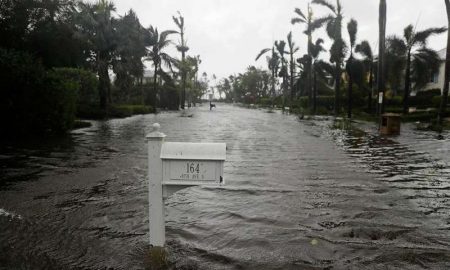July 10, 2018 – Emily Folk writes about sustainability and renewable energy. You can read more of her work at her blog site Conservation Folks. This is her first contribution here at 21st Century Tech Blog. Let me know through comments what you think.
More and more private business is realizing the need to take climate change seriously and start planning for the impacts it could have on them. Much of the current focus has been on mitigating the effects, but companies now need to start adapting to climate change impacts that are inevitable. Elevated temperatures, droughts, flooding, hurricanes and climate change events are already hurting businesses with these incidents likely becoming more frequent and severe no matter what organizations do to become more sustainable.
Here are six things businesses need to do to adapt to the risks of climate change.
Assess Risk
The first step in addressing any vulnerability is assessing risk. Businesses need to evaluate how both gradual and extreme impacts could affect them. The Intergovernmental Panel on Climate Change provides resources that are a great starting point for understanding the effects that climate change could have on a company.
Various factors impact a firm’s vulnerability to climate impacts, including location, the resources it uses and the impact that has on the environment. Moving forward, these considerations should play an integral role in all relevant risk assessments.
Harden Against Extreme Weather Events
Companies must prepare for what climate change will do to weather. That means making physical improvements to facilities and infrastructure to protect against damage from floods, winds, violent rainstorms, hurricanes and other weather extremes. Utilities have been at the forefront in preparing for what a warming atmosphere will bring and are investing heavily in recent years in resiliency upgrades, such as replacing wooden utility poles with steel ones and installing controls that can prevent outages from spreading. In extreme cases, companies may need to move facilities to lessen their risk. They will also have to look at safety standards to incorporate managing climate change vulnerability. And likely they will also have to take steps to mitigate their financial risk including taking on additional insurance.
Diversify Supply Chains
Businesses are bound to face risks to supply chains from climate change. In assessing these risks they will have to look at jurisdictional regulation of energy. They will also have to look at how extreme weather could impact offshore production. A good example occurred in 2011, when flooding in Thailand caused significant production disruption for technology companies including Apple, Samsung, Acer, and Lenovo, and car manufacturers, Honda and Toyota. The flooding took two months to clean up causing the equivalent of approximately $44 billion USD in economic losses. Ensuring that facilities such as these are more resilient to disasters is critical. Also, businesses need to look at diversifying the supply chain, spreading out to more sites where there is less climate risk so that they cannot be impacted by a single source bottleneck.
Access Early Warning Systems
Recent assessments estimate that having access to climate and hydro-meteorological information, as well as early warning systems, can save between $596 million and $3.5 billion of assets and hundreds of lives each year. Companies need to become members of organizations that can help them predict potential disasters and to invest in forecasting technology, where possible.
Nonprofit organization, BSR notes that telecommunication companies, particularly, are investing in enhanced forecasting and warning systems. NTT Group provides earthquake early warning technologies to alert employees if a disaster occurs. And KT plans to collaborate with its stakeholders to develop disaster-forecasting systems through real-time monitoring utilizing sensor networks.
Develop Emergency and Restoration Plans
It is, of course, not enough to know when disasters may be approaching. You also need to have plans in place for how you will react to recover from climate change events. Putting such policies in place, and training employees on them need to be prioritized.
Collaborating with other organizations by sharing lessons learned can help in developing industry best practices. Various industries have already started cooperating this way.
Reduce Emissions and Shift To Greener Products
Companies must respond to a growing public awareness in the marketplace about environmentally harmful products and practices. To address this risk, companies are abandoning fossil fuels as a primary energy source and seeking out ways to make products more environmentally friendly.
Growing numbers of businesses are investing in greener practices with companies like Apple, Google and Ikea, committing to sourcing all their energy requirements from renewables. Companies are also working to produce more sustainable products, both to protect the environment and also because consumers have indicated their willingness to spend more on green products.
Business leaders around the world are waking up to the reality that climate change causes risks to the future of their companies. Taking action to adapt to climate change vulnerability is now seen as an important indicator of their future business success.
















